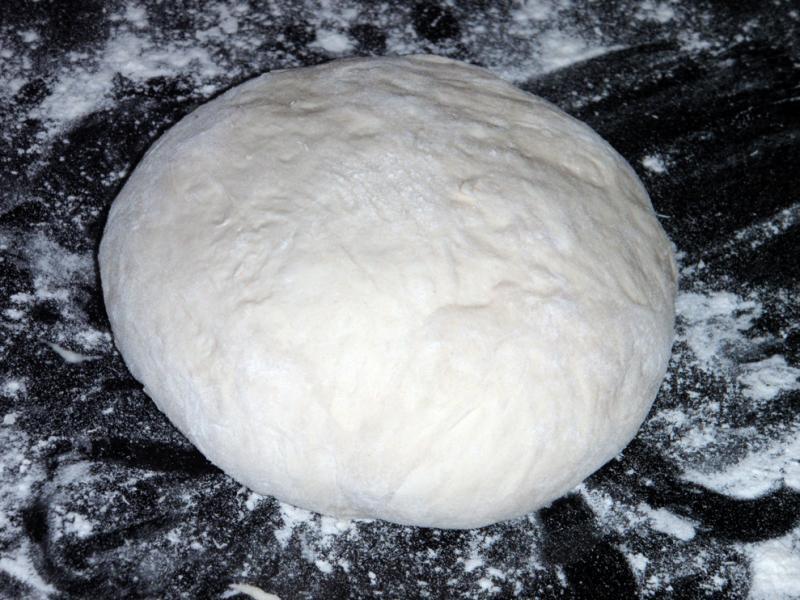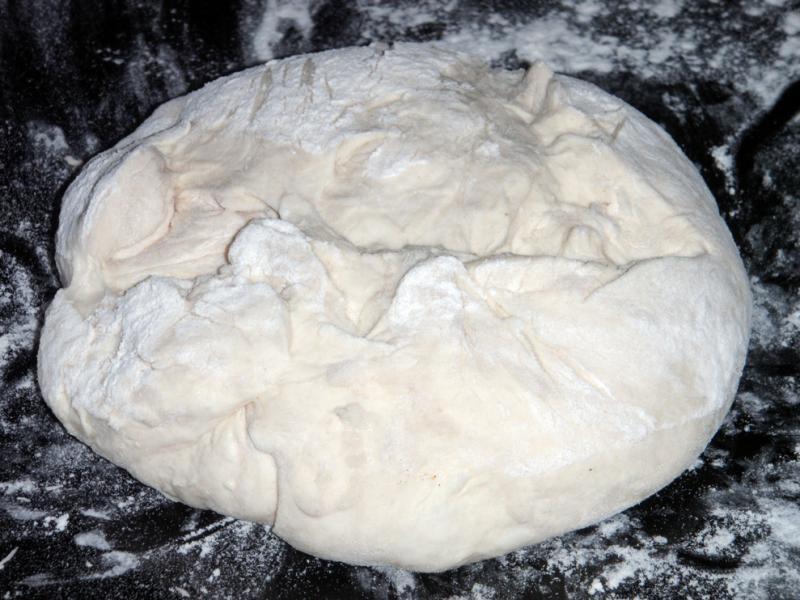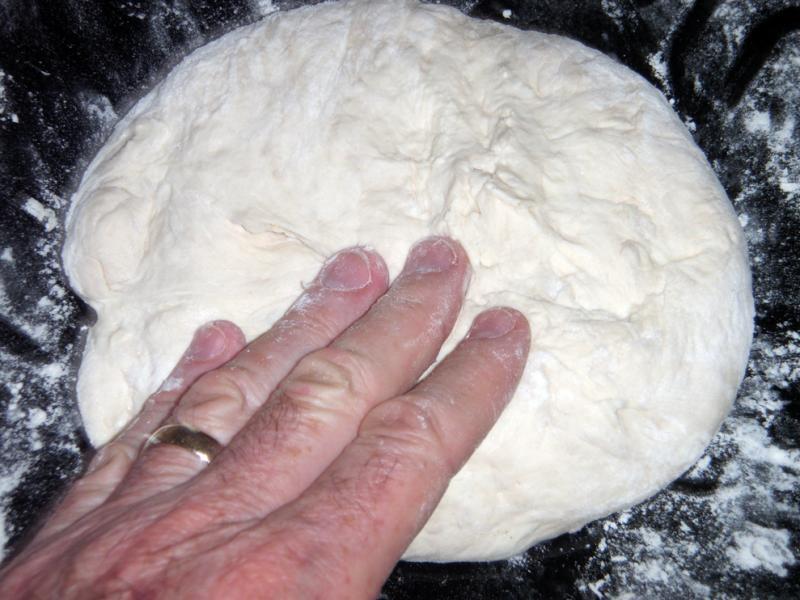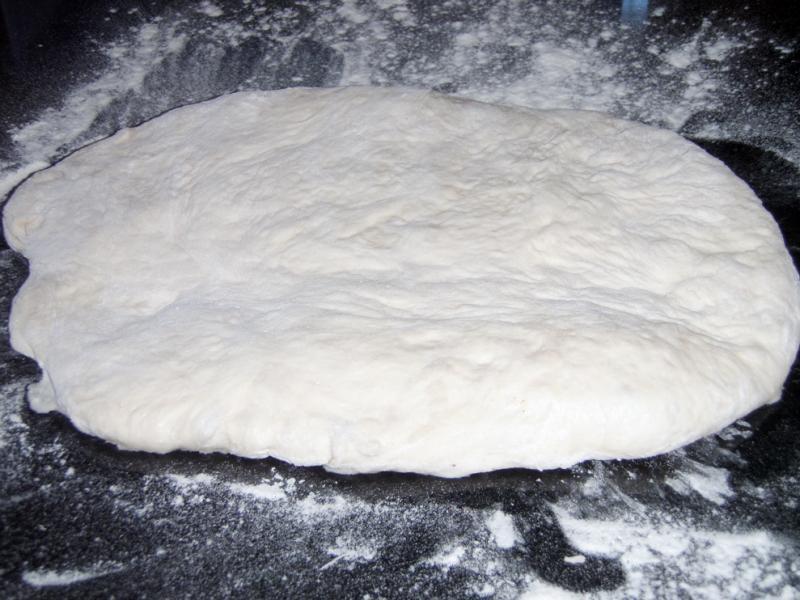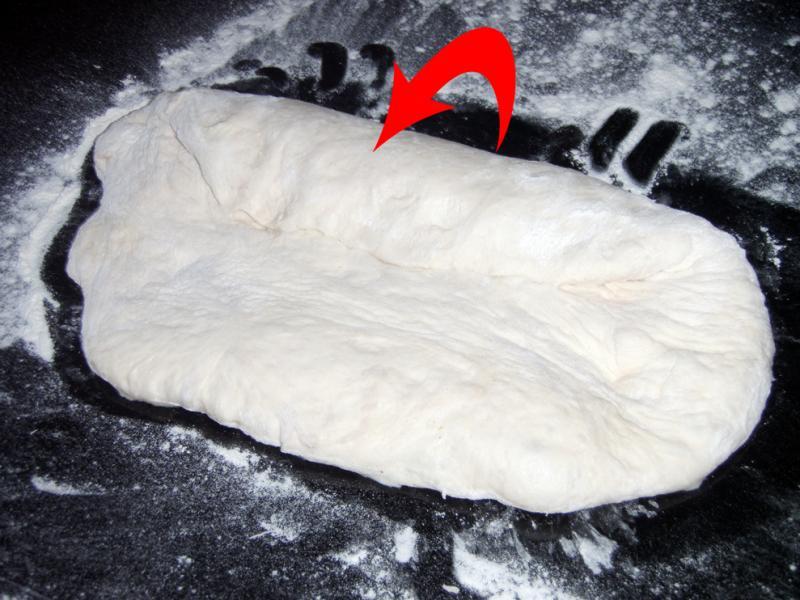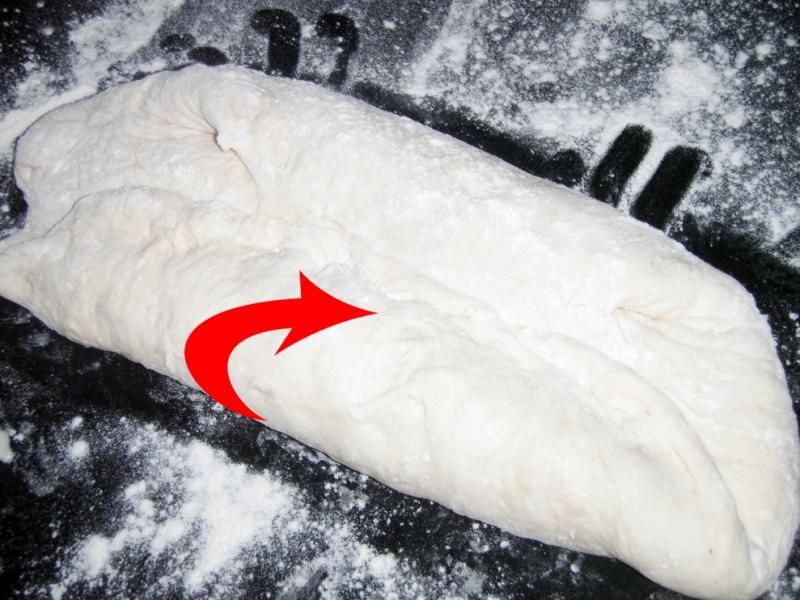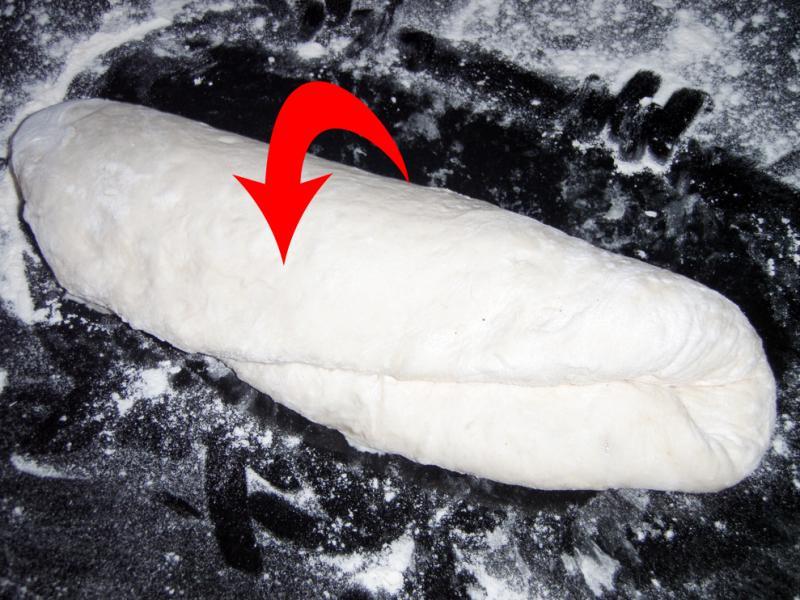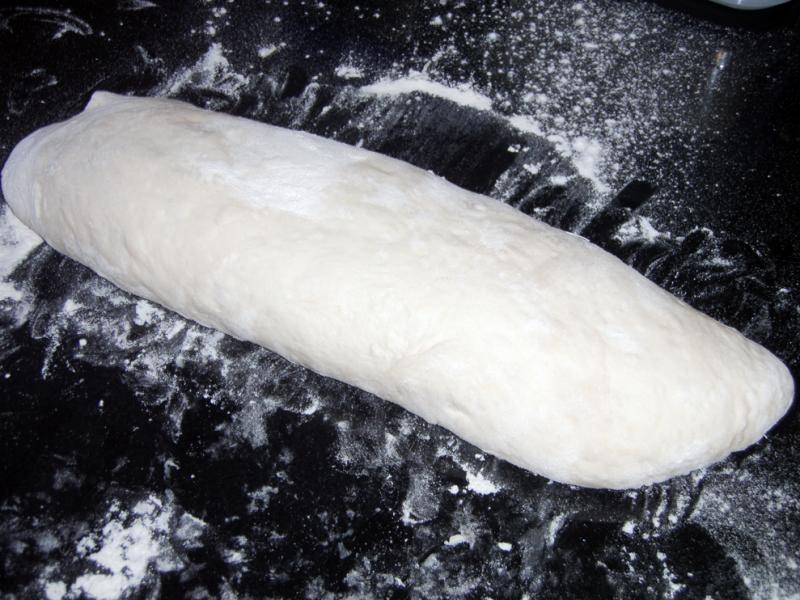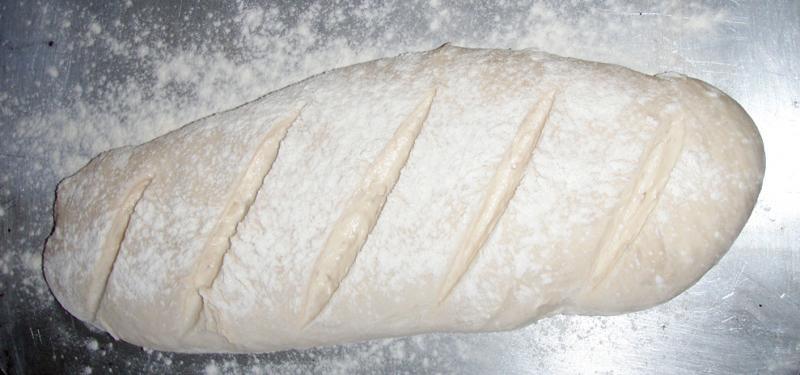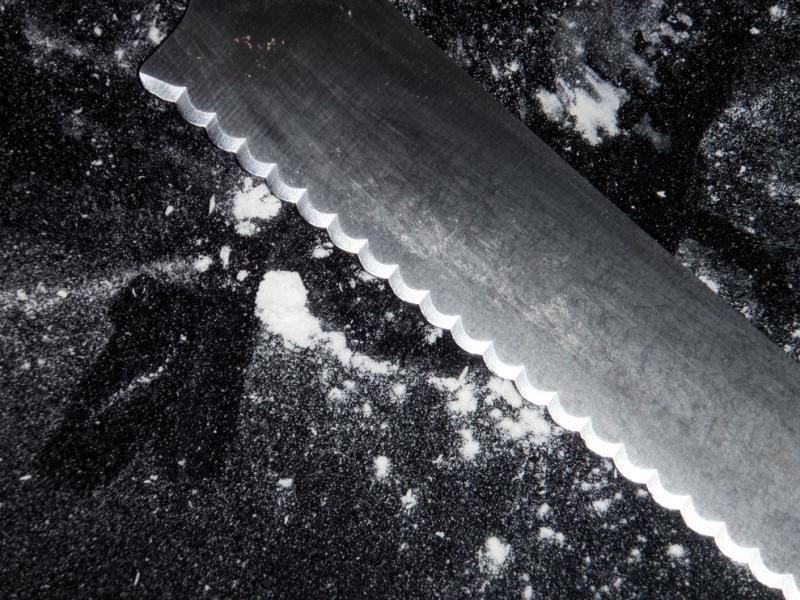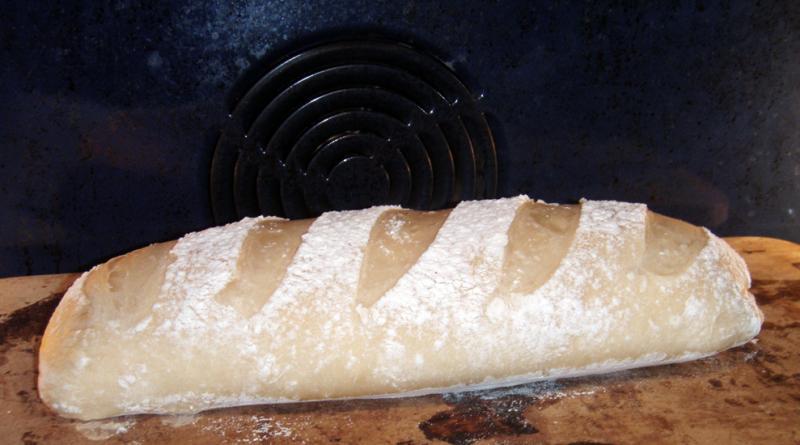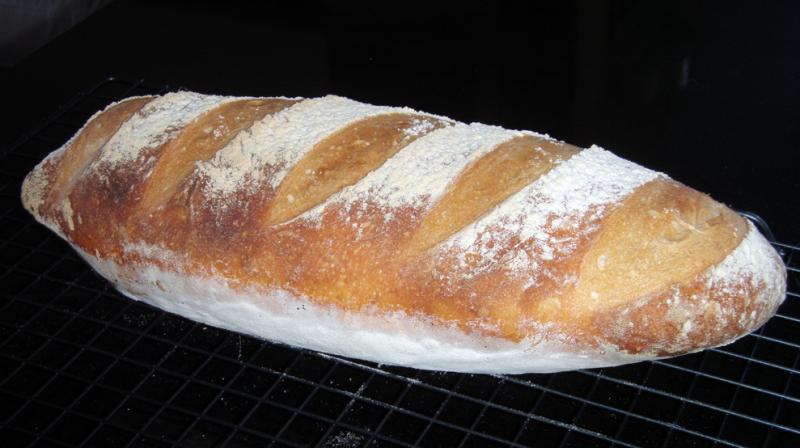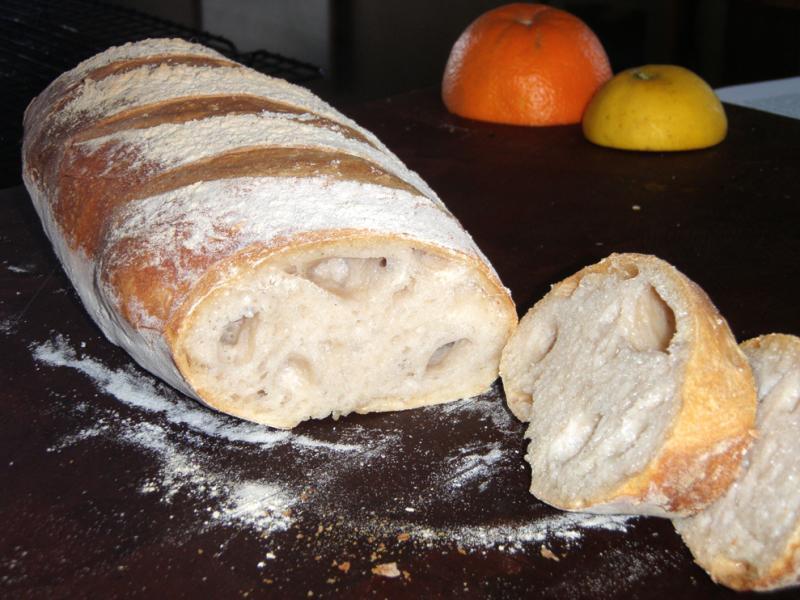-
Posts
1,664 -
Joined
-
Last visited
Content Type
Profiles
Forums
Store
Help Articles
Everything posted by lesliec
-
From this distance I can't comment on whether the Average American Eater is an endangered species, but certainly apostophe abuse isn't: I would hope that Time could do better.
-
Over here I posted a series of photos of how I shape loaves for another no-knead bread recipe - it should also work for yours. I understand at least part of the reason for using a stone is to suck moisture out of the dough to give a crisp crust. If you're using a loaf pan/tin the dough of course isn't touching the stone so you won't get a crispy bottom (no, not your bottom; the loaf's ...). However, a nice, heavy, hot stone does help keep the oven temperature stable when the door is opened to put your dough in. Yet another no-knead recipe (the one referred to by GNV//PDX) uses heavy Dutch oven-type vessels for baking. These would certainly need pre-heating; a thin loaf tin probably wouldn't give you any benefit.
-
Don't know why you'd scratch anything. I'm very happy with my Braun set, which came with mini-food processor and ice crusher. The ordinary blending attachment would only scratch a container if you really tried ... the blade is well protected. I'm frequently amazed by just how many things we use the Braun for.
-

Most Fabulous Restaurant/Views in Queenstown
lesliec replied to a topic in Australia & New Zealand: Dining
I haven't been myself (long overdue for a visit to the Central Otago vineyards) but for general interest, Saffron is in Arrowtown, 20km or so from Queenstown (which is maybe 500km from Christchurch, which is ... you get the idea). Their website is here. -
Can't go wrong with rosemary and garlic, in moderation. Some traditions are good.
-

What makes the back half of a cow not kosher ?
lesliec replied to a topic in Food Traditions & Culture
I can't recall who performed it, but I dimly remember a comedy sketch from some years ago, wherein the elders were establishing the rules by which people should live. The pigs were listening outside the window, and at a crucial moment interjected 'Don't eat pork!'. On a slightly more serious note, I've been wondering what makes salt kosher or not. Can somebody enlighten me? Thanks. -
Look again, Maggie - Rooftop's recipe begins "1 ten-oz. package frozen chopped spinach, thawed and drained" ...
-

"Artisan Bread in Five Minutes a Day" Zoe Francois (2010–)
lesliec replied to a topic in Pastry & Baking
I'm not sure that just dropping a blob (without shaping) onto/into something hot would give the result we would hope for, but I can certainly vouch for 'tenting' the boule or loaf with aluminium foil for the first 10 minutes or so of baking. Just tear off a length of foil, make a loose tent and lay it over the dough once it's in the oven. Expect HUGE rise, but also be prepared to cook an extra few minutes (as much as 10, for me). I do this on a pizza stone, by the way; not in a Dutch oven. I usually don't bother, since the bread is so good anyway, but it does give spectacular results. But having said that, last night's loaf was pretty spectacular without it. No pictures, and mostly all gone! -

"Artisan Bread in Five Minutes a Day" Zoe Francois (2010–)
lesliec replied to a topic in Pastry & Baking
Steve, a few posts back Zoe herself pointed me at her site (artisanbreadinfive.com). There are a lot of good recipes there, including this one which incorporates raisins. Haven't done it myself yet, but it's on the list ... -
I can't speak for what Daniel had in mind, but I've had great results bagging my duck bits with salt, pepper, orange zest and a tablespoon or so of duck fat (sounds pretty traditional to me!). A fairly high temperature certainly seems to work best - I go for 78-82°C for 12 hours or so. Well, look at that - I've just spent weeks reading the whole thread and here's my first post in it! Huge thanks to the usual suspects for all their insights.
-
Hi Jean. Many of us will envy you the sort of friends you have ... If you haven't already made arrangements, I would thoroughly recommend staying in Cadaqués rather than Roses. Cadaqués for us last year was a delightful small town, full of character, while Roses looked like the worst of the Costa Brava as seen on various TV programmes. The Hotel Playa Sol, while basic, was very comfortable and has a lovely pool area - make sure you ask for a room with balcony on the beach side. The local taxi knows how to find El Bulli and will be waiting for you at the end of your meal if required. You could drive yourself, but the road is ... interesting. Cadaqués is only 5km or so from where Salvador Dali used to live, and there are a number of other Dali sites to visit around the area if you're so inclined. I don't have personal experience, but I'm sure a number of eGulletters will recommend a meal at El Celler de Can Roca(in Girona, not too far away) as another fabulous dining experience while you're in the area. Have a great trip.
-

"Artisan Bread in Five Minutes a Day" Zoe Francois (2010–)
lesliec replied to a topic in Pastry & Baking
Ah! The buns look great. The brioche dough is the one I haven't succeeded with yet, but I've been intending to have another go. Here's a good excuse! I suspect my problem last time had something to do with mixing - I mixed everything happily, turned round and found the eggs still on the bench. Certain Words were spoken, but I won't repeat them here. Thanks for directing me to the site, Zoe - I hadn't realised how much was in there. And you'll be most welcome to come and bake in NZ any time you like (we have a real Dutch windmill making 'real' flours - interested?). -
Hi, Teagal. Where I work, we have an occasional 'craft fair' where suitably-inclined staff bring along their home-made food/baby quilts/jewellery/whatever to sell over lunchtime. I've had some success with herb-infused olive oils; you might like to look into that. My 'point of difference' is that the herbs come from our home garden, and the label (designed by me - I'm supremely multitalented!) makes that clear. I also use a local (New Zealand) olive oil rather than the commercial Spanish/Italian ones you can get almost anywhere. I've tracked down a supplier of suitable bottles. I only sell in 250ml quantities - it feels more 'artisan', I suppose. My recipes were originally based on a Ramsay one in his (I think) Kitchen Secrets book, but it's not hard. Basically: blanch the herbs very quickly in hot water to annoy any bugs, refresh in ice water, dry, add to oil and bring slowly up to around 90°C and hold it there a few minutes (I do 5 litres at a time in a large stock pot), allow to cool, bottle. I can't help you with pricing (I sell mine at $NZ15 a bottle, but that's entirely irrelevant to you). Check what your local specialist food shops sell similar things for. I fall somewhere within the range of prices out in retail land, and make a very comfortable profit! You may also need to think about any regulatory requirements. Because I'm only (so far) selling to colleagues I'm ignoring that aspect, but if I wanted to expand to farmers' markets and such I'd probably have to be preparing my oil in a commercial kitchen, the cost of which might then affect the price I'd need to charge. The flavours I've had most success with are sage, rosemary and bay (nobody seems to do bay oil, but it's delicious). I've been asked for basil and lemon and I've done them, but I found it was quite hard to get a good flavour out of them (this surprised me, given how pungent basil is in its normal state. In the end I had to hit the oil, basil and all, with my stick blender to get any taste out of it, which resulted in a rather murkier result than I'd like). My 'big 3' give me no trouble, though. I plan, sometime, to experiment with thyme and fennel as well. Hope this gives you something a bit different to think about. If you go with this, I recommend you have small dishes of oil to sample, along with small pieces of good bread for dipping. Good luck ...
-

"Artisan Bread in Five Minutes a Day" Zoe Francois (2010–)
lesliec replied to a topic in Pastry & Baking
Hi Zoe. I can't be absolutely certain since I use a supermarket brand, but most of New Zealand's flour comes from one mill, so I suspect the protein is somewhere around 10% (based on the equivalent from the 'non-supermarket' brand, which says it's 10.3%). It's called 'high grade' here and is recommended for bread, pastry and cakes. Many thanks for creating the book. I've lost count of the people I've introduced to it, and I claim responsibility for at least three sales! When I get some thinking/experimentation time I'd like to use the method for a spicy fruit loaf (or maybe hot cross buns, it being that time of year). Any suggestions? Thanks, Leslie -
The shop mentioned here, G. Detou, sounds like a possibility. I stumbled upon this posting, having been referred to Mr Lebovitz's blog by another eGulleter on quite a different subject, and now I want to go there myself. I haven't found Detou's own site, if there is one, but there are more recent references to the shop revealed by a bit of quick Googling. Good fishing!
-
Ah yes, I was forgetting the microwave on a box in the bath - happy times ... In fact, the restaurants of Wellington did quite well out of our kitchen project.
-
Here's another recipe. This one includes a quantity of coffee, which I suspect may perversely bring out more of the Guinness flavour. And happy St Paddy's Day for tomorrow.
-
Thanks, Stuart. That's an interesting site, which I can see will occupy some significant quantity of my time if I let it. I seem to think NZ tablespoons are 15ml/3 tsp. Funny things, Aussies. But 7 grams I understand. Not quite sure of the type of mousse yet, although I did have a rather interesting lychee one at a restaurant recently (didn't pick it as lychee. We were thinking elderflower). The intention is to make cylinders by pouring the un-set mousse into rolled up acetate sheets, then serve as part of a mixed dessert plate - maybe poked through something else. Yeah, I know, too vague ...
-
Hi Jim. Welcome to eGullet. How much of the renovation you do yourself will depend on your skills, confidence and time, but one thing I'd strongly advise is to have your kitchen designed by a professional. We've had two new kitchens done now (different houses) and both times the designer has been able to come up with ways of using the available space we just wouldn't have thought of. The way it works here, and I can't imagine Canada will be much different, is the designer comes round at a suitable time and talks about how you like (or would like) to use the kitchen, any special requirements and ideas you have, then makes some measurements, goes away and comes up with a design. There's no reason not to get more than one designer looking at it - we had something like five different designs, from three different designers, last time. If you like one, you can either get the designer to look after the whole project, or simply buy the design (a few hundred dollars - here, anyway) and talk to your friendly builder/cabinet maker (or DIY). If you don't like any, send them away to try harder, or find another designer. As an example of the sort of thing professional designers can come up with, we mentioned that we'd quite like somewhere out of the way to feed the cats. The design we went with has one set of cupboard doors set further above the floor than the rest, so we can still use that cupboard when the moggies are dining. Good luck, whichever way you go. We expect regular updates! Bye, Leslie
-
Hi all. I need your help with some translation. I've been looking for a generic mousse recipe; I want something that will stay fairly firm, so a gelatin-based one seemed right. I've found a promising-sounding one, but it calls for 1½ 'envelopes' of gelatin. Can somebody please tell me what that is in grams? Thanks ...
-
Here's a thought which (he says modestly) answers a number of the points above. I don't know the capabilities of the software eG runs on, but it may be possible to create recipe templates. A user viewing a particular recipe could click to wrap the recipe into a printer-friendly (or downloadable HTML) page. Very much a one-at-a-time thing and doesn't address Anna's concerns about untested recipes, but may be doable with only modest effort.
-

"Artisan Bread in Five Minutes a Day" Zoe Francois (2010–)
lesliec replied to a topic in Pastry & Baking
Apologies; I should have credited my inspiration for the shaping technique above. He's Richard Bertinet, a French baker now resident in Bath, where he runs a cooking school. His two books, Dough and Crust, were my absolute favourite bread books before I discovered the 5-minute technique. They're still very worthwhile - pains au raisin made from croissant dough, anyone? -

"Artisan Bread in Five Minutes a Day" Zoe Francois (2010–)
lesliec replied to a topic in Pastry & Baking
A few posts back I promised to upload photos of how I generally shape my loaves. Well, Saturday = bread day! 1. This batch has been in the fridge for a week, maybe a day or two more 2. Out of the tub, ready for shaping 3. Boule made - follow the instructions in the book 4. Flip it onto its back (like a playful kitten ...) 5. Flatten the ball, with your fingers or the edge of your hand. More flour may be needed to avoid sticky situations 6. You should end up with a roughly rectangular shape, maybe 2cm or an inch thick 7. Fold one edge inwards about a third 8. Fold the other edge to meet the first fold 9. Fold the whole thing in half along the join of the first two folds 10. Roll so the fold is downwards and you're ready to go. Now let the dough sit for half an hour or so; get the oven heating at some point 11. Floured, slashed and ready for the oven 12. Incidentally, this is the best type if knife I've found for slashing this wet dough. Mine's a Wusthof; there will be others with the same cutting surface 13. After 10 minutes in the oven (230°C)- we have liftoff! 14. Now, isn't that a pretty thing? 15. And inside (ignore the orange and lemon; they just happened to be on the cutting board and have nothing to do with this topic) This is just the basic recipe, but I use the same technique for Deli Rye. The whole wheat one is a bit wet; it needs a loaf tin. I really like this bread ... -

"Artisan Bread in Five Minutes a Day" Zoe Francois (2010–)
lesliec replied to a topic in Pastry & Baking
I'm exited to try this, may I ask if you pre-heated the pan? (Lovely loaf!) No need to heat the pan. They're generally so thin they heat up quickly anyway. One thing to note is your loaf may need a few extra minutes in the oven; I find they don't cook quite as fast with something between the bread and the heat. I've made the 'Deli Rye' variant from the book in a silicone loaf tin. It came out very well, but the shape was interesting - the soft sides allowed the loaf to bulge. In fact, it came out a similar shape to the way I usually do mine, which starts with a boule. I flatten it, fold one side in about a third of the way, then the other side to meet it, then in half along the seam produced by the other two folds. I'll try to remember to post pictures of this sometime; it's easier to do than describe. And I'll have to work out if I can manage my camera with floury fingers ... Aember - good luck! You'll be fine. I have several colleages and even my son making this recipe happily. I find it's very forgiving. -
We recently attended a cooking class run by an ex-chef who had done her back in after years in a busy restaurant. She runs a variety of classes and caters for both interested individuals and corporate groups. She's formed a partnership with a local winery and is able to use their kitchen - the winery connection is also handy for accompaniments to the long lunch which follows the classes! Here's her site, which may be of interest. Good luck to your cousin. Edited for spelling.




